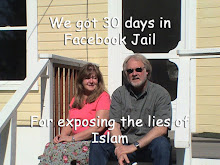Strange as it may sound we had an experience in Homer, Alaska with some very friendly Old Believers who would not pray with us simply because they did not know how we would hold our fingers. A persecuted church can become quite paranoid regarding outsiders. This schism eventually lead to a weakening of the Russian church making it easier for Peter the Great to take an autocratic position over church and state thus the Czar (Russian equivalent to Kaiser or Caesar) could deal directly with schismatics like any dictator might. In 1721, the Tsar did away with the Patriarchs and the Church Council assuming total control which alienated many. When the state run Orthodox Church could no longer communicate with the Old Believers things began to unravel. This paved the way for the Socialist October Revolution in 1917 in which atheists stepped in to solve the religion problem once and for all. The rest is history, at least that is what they thought. Islam continues to plague Russia as it always has, and the church in various forms continues to march forward.
In 1853 the Russians, after being invaded for several hundred years by Ottoman Muslims collecting slaves, destroyed the Ottoman fleet in the Battle of Sinop. Russia was able to drive the Muslims out of their slave trading center in Crimea.
A problem arose however with the west because the Ottoman Empire owed its western protectors loads of cash. The west did not want Russia to kill its cash cow and the west had military technology good enough to stop Russian expansion.



